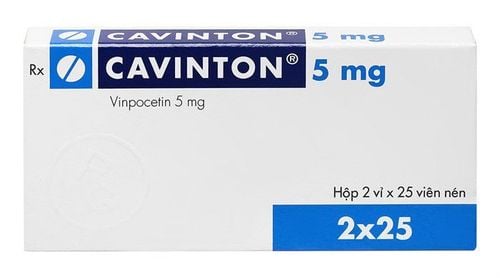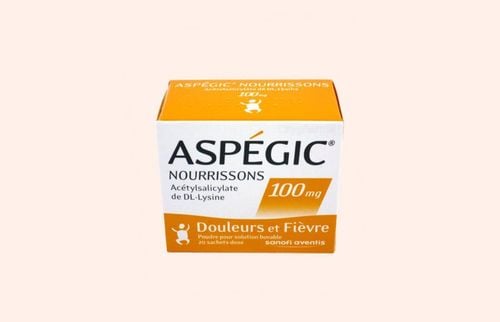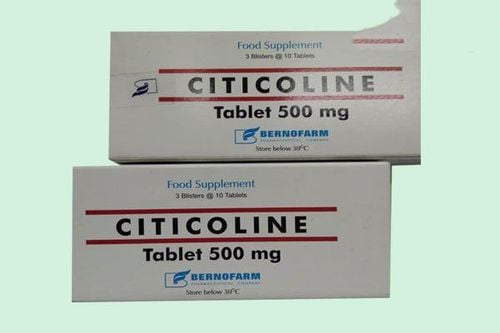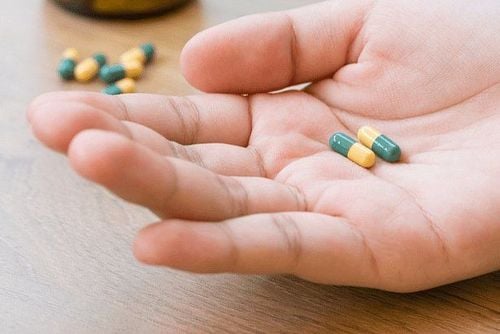Traumatic brain injury and cerebrovascular accident are two common diseases with serious neurological consequences. Besides standard treatment, patients can use Somazina to help protect and regenerate brain cells. So what is Somazina and what is its efficacy?
1. What is Somazina?
Somazina contains the active ingredient Citicoline, a nootropic drug primarily indicated for the treatment of traumatic brain injuries and the management of cerebrovascular sequelae. Somazina is contraindicated in patients with a prior history of allergic reaction to Citicoline or any component of the Somazina formulation and in patients with parasympathetic hypertonia.
Somazina is researched and developed by the pharmaceutical company Ferrer Internacional S.A and is exclusively distributed by Tedis, France. Currently, Somazina has been imported into Vietnam, has undergone quality assurance testing, and received marketing authorization.
Somazina is formulated as a solution for two routes of administration, including:
- Somazina 1000mg/4ml for injection, each box containing 5 ampoules;
- Somazina is for oral administration at a strength of 1000mg/10ml. Each box contains one 30mL vial and a dosing syringe.
2. Pharmacology of Somazina
2.1. Pharmacodynamics of Citicoline
Somazina, containing Citicoline, stimulates the biosynthesis of structural phospholipids of the neuronal cell membrane. Consequently, Somazina administration can improve cell membrane function, similar to ion exchange pumps and receptors, which is crucial for nerve impulse transmission. Somazina's membrane-stabilizing effect has a positive impact on reabsorption across the neuronal cell membrane in cases of cerebral edema.
Experimental studies have demonstrated that citicoline can inhibit the activation of certain phospholipases (such as A1, A2, C, and D), prevent the formation of free radicals, limit membrane system destruction, and protect antioxidant defense systems such as glutathione. Another effect of Citicoline is to protect neuronal energy reserves, inhibit apoptosis, and stimulate acetylcholine synthesis.
Experimental evidence indicates that citicoline in Somazina exhibits neuroprotective effects in cerebral ischemia, significantly improving functional outcomes in patients with cerebral infarction and slowing the progression of lesions. In individuals with traumatic brain injury, citicoline promotes recovery, reducing both the duration and severity of brain cell damage post-injury.
Furthermore, Somazina also improves concentration and cognition, prevents memory loss, and mitigates cognitive and neurological deficits associated with cerebral ischemia.
2.2. Pharmacokinetics
Somazina demonstrates good absorption via oral, intramuscular, and intravenous routes, leading to a marked increase in plasma choline concentrations. The oral formulation of Somazina is almost completely absorbed, with bioavailability equivalent to intravenous administration.
Post-absorption, Somazina is metabolized to choline and cytidine in the gut and liver. Citicoline distributes widely in the brain, binding rapidly to structural phospholipids, while cytidine binds to cytidine nucleotides and nucleic acids.
Elimination is primarily via exhaled CO2 (approximately 12%), with minimal excretion in urine and feces (less than 3%).
3. Instructions for Use of Somazina
3.1. Injectable Somazina
3.1.1. Dosage
- Adults (Cerebral hemorrhage/Ischemic stroke): 1000mg/time x 2 times/day for a treatment duration of approximately 6 weeks.
- Adults (Neurological sequelae): 500-1000mg daily for a treatment duration of approximately 12 weeks.
- Elderly: No dosage adjustment is required when using Somazina.
- Pediatric use: Not recommended; risk-benefit assessment advised before use.
3.1.2. Somazina Usage
- Injectable Somazina is for administration by trained healthcare professionals only.
- Injectable Somazina can be administered intramuscularly, as a slow intravenous injection (over 3 to 5 minutes), or as an intravenous infusion (with an infusion time of 40 to 60 minutes).
3.2. Oral Somazina
3.2.1. Specific Dosage
- Adults: Take 3 times daily, with each dose containing 200mg of Citicoline, equivalent to 2ml of oral Somazina solution.
- Children: Administer 2-3 times daily, with each dose containing 100mg of Citicoline, equivalent to 1 ml of oral Somazina solution.
- Patients should take Somazina continuously and consistently for a maximum duration of 9 to 12 months. Do not self-adjust the dosage and adhere strictly to the dosage prescribed by the treating physician
3.2.2. Administration of Oral Somazina
- Oral Somazina is formulated as a solution in a sealed vial. When using the medication, it should be withdrawn from the vial using the provided dosing syringe.
- For withdrawal, ensure the syringe plunger is fully pushed down. Then, gently insert the needle into the vial and carefully draw the plunger upwards until the plunger tip aligns with the ml marking corresponding to the prescribed dose.
- Empty the contents of the syringe into a glass. Consume the medication directly or dilute it with approximately 120 ml of purified water immediately after dilution.
- The most effective time to take oral Somazina is during meals, as this aids in the complete absorption and metabolism of the medication.
4. Adverse effects of Somazina
While taking Somazina, some generally mild and infrequent side effects may occur:
- Hallucinations, headache, dizziness, insomnia;
- Abnormal hypertension or hypotension;
- Dyspnea (shortness of breath);
- Visual disturbances, visual impairment, blurred vision;
- Gastrointestinal disturbances such as nausea, vomiting, abdominal pain, diarrhea;
- Allergic reactions, including rash, itching, erythema multiforme, and subcutaneous hemorrhage.
5. Important Considerations When Using Somazina
- Exercise caution in patients with asthma or hypersensitivity to acetylsalicylic acid.
- Close monitoring is necessary for patients with fructose intolerance.
- Due to the potential for visual disturbances or decreased visual acuity, caution is advised for those who drive or operate complex machinery.
- For safe storage, keep both oral and injectable Somazina out of the reach of children. Store in a dry, well-ventilated location at a temperature between 27 and 30°C. Avoid storage in humid, unsanitary conditions or areas exposed to direct, intense light.
- Do not use if the Somazina vial has sediment, discoloration, or any changes in its original physical appearance, as these are signs of spoilage.
6. Drug interactions of Somazina
Concomitant use of Somazina with other products may affect the activity of Citicoline, including its absorption, distribution, metabolism, and excretion. This can reduce the effectiveness of Somazina or increase the risk of adverse drug interactions. Therefore, Somazina should not be used concurrently with medications containing Meclofenoxate or medications that enhance the effects of L-Dopa.
To arrange an appointment, please call HOTLINE or make your reservation directly HERE. You may also download the MyVinmec app to schedule appointments faster and manage your reservations more conveniently.








